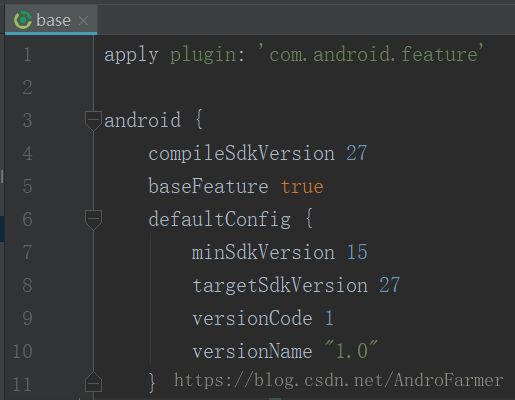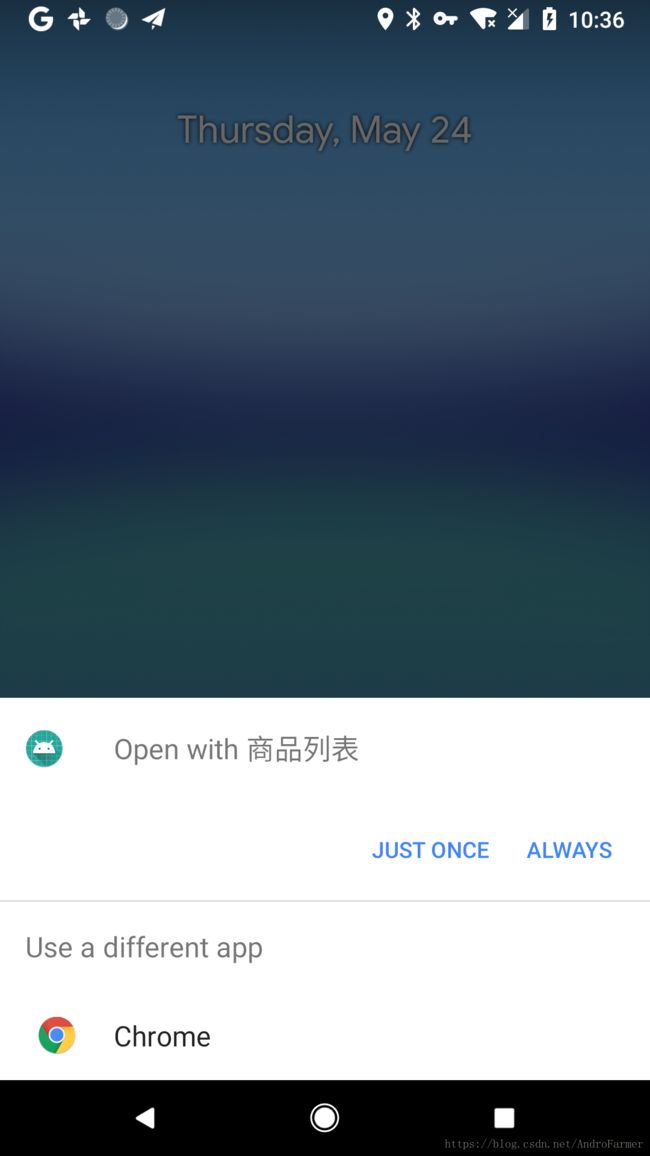instant app入门与开发指南
本文由玉刚说写作平台提供写作赞助,版权归玉刚说微信公众号所有
原作者:AndroFarmer
版权声明:未经玉刚说许可,不得以任何形式转载
概述
instant app 是谷歌推出的类似于微信小程序(或者说小程序类似于instant app)的一项技术,用户无须安装应用,用完就走,同时兼备h5的便捷和原生应用的优质体验。
工作方式和应用场景
工作方式:
- 当用户点击链接时,通过applink去打开相应的instant app,如果之前没有打开过,则会从play store去下载并打开,整个过程一气呵成,跟浏览器打开网页,如果有缓存先读缓存,没有就去服务器loading一样
应用场景:
- 通过直接点击链接进入(从社交网络或短信中点击链接)
- 通过浏览器搜索,如搜索X电商的y商品,通过点击浏览器的搜索结果可直接进入instant app
- 通过google play 可以先试用部分功能,觉得不错再安装完整功能
- 在游戏中方面的应用,跟上面类似,更偏相向于试玩
如何创建模板Demo
- 创建一个project
- 当走到选择form和sdk版本时,勾选 “include android instant app support“
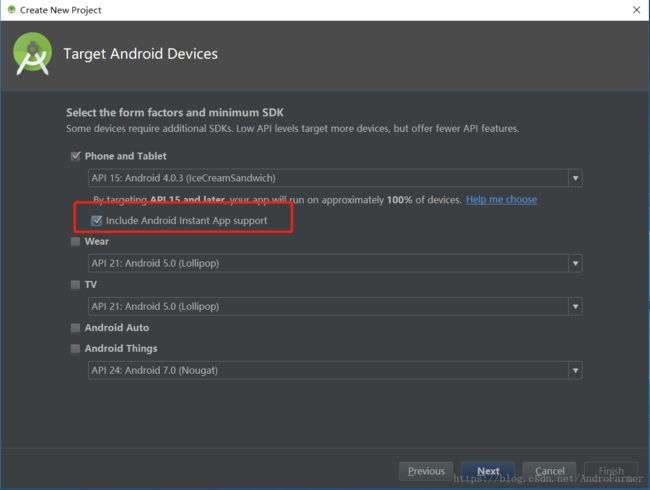
- 如果没有安装相应support,去sdktools下安装

- 填写apps link 相关的url 参数,这里作为创建演示用默认值就好
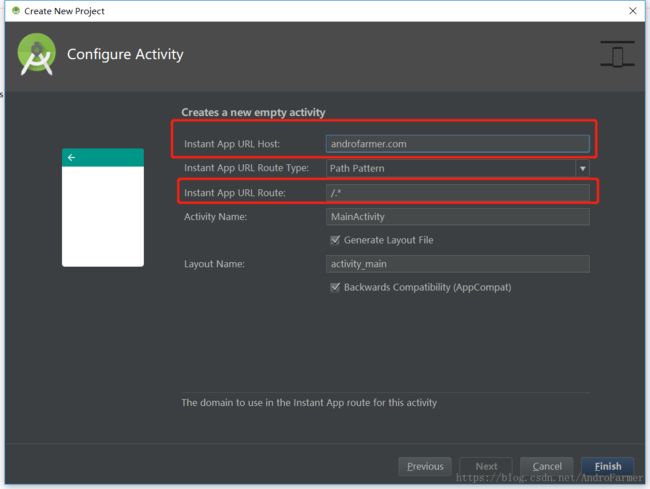
- 项目创建完成后会生成4个模块

至此一个模板instant app创建过程就完成了
项目结构
4个模块
- app 类型:com.android.application
- base 类型:com.android.feature
- feature 类型:com.android.feature
- instantapp 类型:com.android.instantapp
项目解析
传统方式创建一个项目,会生成一个app的模块,创建instant app 也会创建一个app模块,但功能跟传统的不太一样,传统的app模块基本上是整个项目的核心,所有的资源和代码实现都在这里,但instant app中app模块,充当的是传统app入口,具体代码实现交给base 和feature模块去完成同样的instantapp模块也是作为入口,它是作为instant app的入口。
写一个例子
我们来写一个例子,进一步介绍instant app
项目很简单,就是一个商品列表和商品详情
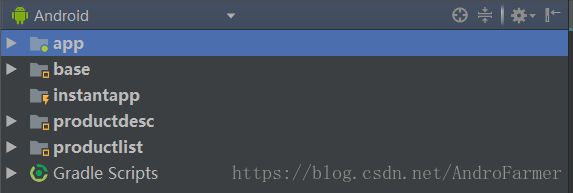
以instantapp方式运行看下运行效果(后面演示以app方式运行),多任务下显示一个闪电图标,代表这是一个instant app,并且在桌面找不到图标

在应用管理里面会多出 instant app的类别,在这里可以选择清除instant app 或者安装完整版app

打包过后,app模块下会生成app-debug.apk,instantapp模块下会生成 instantapp-debug.zip,并且 instantapp-debug.zip包含三个文件 :base-debug.apk,productlist-debug.apk,productdesc-debug.apk
我们可以根据需求在dependencies中配置让instantapp中打包一个或多个模块进去,但是base模块是必须的
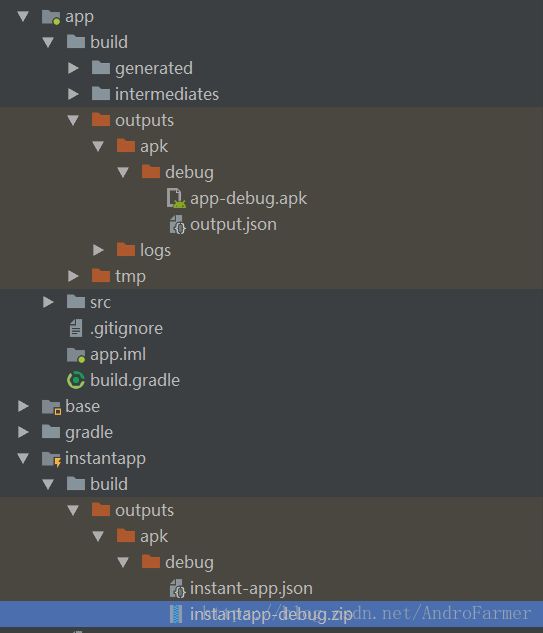

多个feature间的数据交互
上面的例子我们用了两个feature:productlist,productdesc,他们之前是如何进行交互的呢。
先来看下他们俩的dependencies
productlist:
dependencies {
implementation fileTree(include: ['*.jar'], dir: 'libs')
implementation project(':base')
testImplementation 'junit:junit:4.12'
androidTestImplementation 'com.android.support.test:runner:1.0.2'
androidTestImplementation 'com.android.support.test.espresso:espresso-core:3.0.2'
}producdesc:
dependencies {
implementation fileTree(dir: 'libs', include: ['*.jar'])
implementation project(':base')
testImplementation 'junit:junit:4.12'
androidTestImplementation 'com.android.support.test:runner:1.0.2'
androidTestImplementation 'com.android.support.test.espresso:espresso-core:3.0.2'
}可以看出,他们都依赖base模块,但相互之间没有关系。当然我们可以在productlist中去implementation project(‘:producdesc’) 这样可以可以访问producdesc模块了,但是这不符合instant app 模块化设计的思路了,这样就没法根据需求app和installapp 只打包各自需要的模块了,这里我们可以使用deep links,通过隐式的intent去打开productdesc,这样模块之间就可以解耦访问了
这里先看下我的例子中deep links的配置,后面会详细介绍
<activity android:name=".ProductDesc" android:label="商品详情">
<intent-filter >
<action android:name="android.intent.action.VIEW" />
<category android:name="android.intent.category.BROWSABLE" />
<category android:name="android.intent.category.DEFAULT" />
<data
android:host="androfarmer.com"
android:path="/productdesc"
android:scheme="https" />
intent-filter>
activity>那么根据我们的deep links 去写intent如下
Intent it=new Intent();
it.setAction(Intent.ACTION_VIEW);
it.addCategory("android.intent.category.BROWSABLE");
it.addCategory("android.intent.category.DEFAULT");
it.setData(Uri.parse("https://androfarmer.com/productdesc"));
it.putExtra("data",datas.get(position));
ActivityCompat.startActivity(ProductList.this,it,null);看下运行效果

这样是可以打开,但是会弹出选择框让我们选择用哪个应用打开。要解决这个问题 我们可以在上面代码中加入这一句
it.setPackage(getPackageName());
前面我们说过instant app是可以通过链接直接打开app,没有弹窗,但是我们从外部链接打开的话不可能知道我们的app的包名,所以一旦我们的intent无法从系统中所有的app找到唯一值的化,系统就会弹出框让我们选择哪一个app打开,要做到从外部无弹窗打开就需要用到app links。
以下是用adb 命令模拟从外部打开应用的情况
adb shell am start -W -a android.intent.action.VIEW -d https://androfarmer.com/productlistApp Links
关于deep links 这里就不做详细介绍了,大家可以搜索下资料还是挺多的,简单点来说,app links也属于 deep links,app links做了更严格的限制条件,以保证链接是安全可靠的
下面先看一张官方的两者之间的对比图

可以看到,app links对比deep links 做了更为严格的要求
- scheme只能是http 或https
- action必须android.intent.action.VIEW
- category必须包含 android.intent.category.BROWSABLE 和 android.intent.category.DEFAULT
- 系统版本有最低6.0的要求
- 需要数字资产链接文件完成链接的验证(下面介绍)
看下我们例子中配置的app links
<activity android:name=".ProductList" android:label="商品列表">
<intent-filter
android:autoVerify="true" >
<action android:name="android.intent.action.VIEW" />
<category android:name="android.intent.category.BROWSABLE" />
<category android:name="android.intent.category.DEFAULT" />
<data
android:host="androfarmer.com"
android:path="/productlist"
android:scheme="https" />
intent-filter>
<intent-filter>
<action android:name="android.intent.action.MAIN" />
<category android:name="android.intent.category.LAUNCHER" />
intent-filter>
activity>android:autoVerify=”true” 这个标明,它是自动验证的, 把这个去掉就符合deep link的规则了
Link Verfication(数字资产链接验证)
要完成链接的验证我们有个需要有个站点,并且要在站点根目录配置一个”.well-known” 文件夹,文件夹中需要配置一个名为”assetlinks.json“数字资产链接文件,
文件内容的格式如下:
[{
"relation": ["delegate_permission/common.handle_all_urls"],
"target" : { "namespace": "android_app", "package_name": "com.androfarmer.instant.app",
"sha256_cert_fingerprints": ["0E:2E:C0:8B:99:AA:F3:51:4C:EF:A5:14:A6:B9:0E:EA:85:FD:A6:F6:AB:A2:40:DB:27:C9:45:2E:8F:4E:97:D6"] }
}]最终要保证在浏览器上测试 https://domain.name/.well-known/assetlinks.json 这个数字资产链接文件可以正常访问
domain.name替换成你的站点域名,并且要与我们app中配置的app links域名一致
assetlinks.json文件通过 https://developers.google.com/digital-asset-links/tools/generator 官方站点去生成和验证,一定要通过验证才能使用。
也可以直接在上面的基础上修改 package_name 和 sha256_cert_fingerprints的值,这两个值 也就是我们app的application id和签名文件的sha256值
经过这个步骤以后,我们再通过链接去打开我们的app就不会出现选择弹窗直接打开我们的app了。由于条件不允许(没有个人站点),这里就不演示了
如果要体验完整的instant app流程的话 还需要将app 和instant app的包都上传到google的play store才可以。
Tips & Suggestion
- 要使用模拟器测试instant app,最好使用 Android 8.1以上系统,并且必须硬件架构选择x86 不能是x86_64
- App Links Assistant 可以帮助我们生成app links 工具在as菜单栏tools下找到
- assetlinks.json 可配置一个站点关联一个或多个app,或者一个app关联多个站点,具体详见官方链接https://developer.android.com/training/app-links/verify-site-associations
- instant app 可以使用的权限:
- ACCESS_COARSE_LOCATION
- ACCESS_FINE_LOCATION
- ACCESS_NETWORK_STATE
- BILLING
- CAMERA
- INSTANT_APP_FOREGROUND_SERVICE (API level 26 or higher)
- INTERNET
- READ_PHONE_NUMBERS (API level 26 or higher)
- RECORD_AUDIO
- VIBRATE
- 对于已经发布应用市场的instant app 可以通过调用 showInstallPrompt() 去引导用户安装完整版的app
- 可以调用 isInstantApp()查看是否是instant app 这对于权限判断比较重要,比如你的app和instant app共用feature的情况
- instant app 不能脱离完整版的app 必须先上传app 才能上传instant app
- instant app 单个feature的大小限制是4MB,但没有总大小的显示,所以如果项目体积比较大可以通过多feature方案解决
好了最后附上一张 google trips 在应用市场的截图,install 左边有个 try now 这个就是instant app在应用商场上的入口




